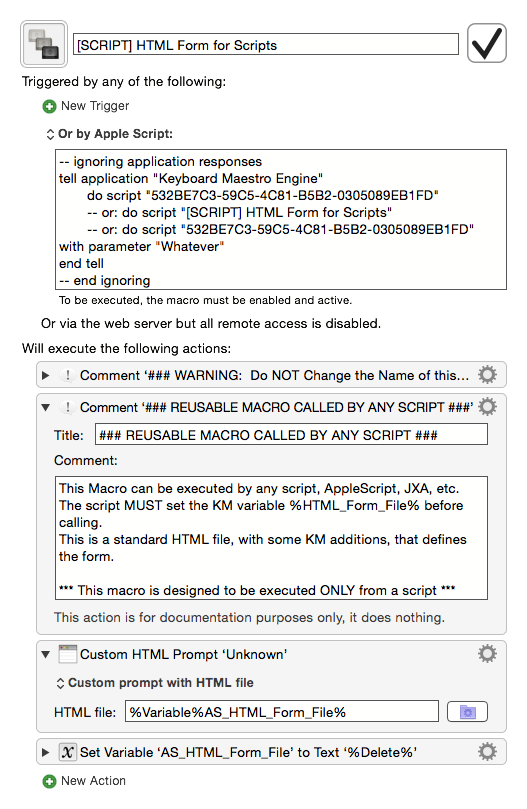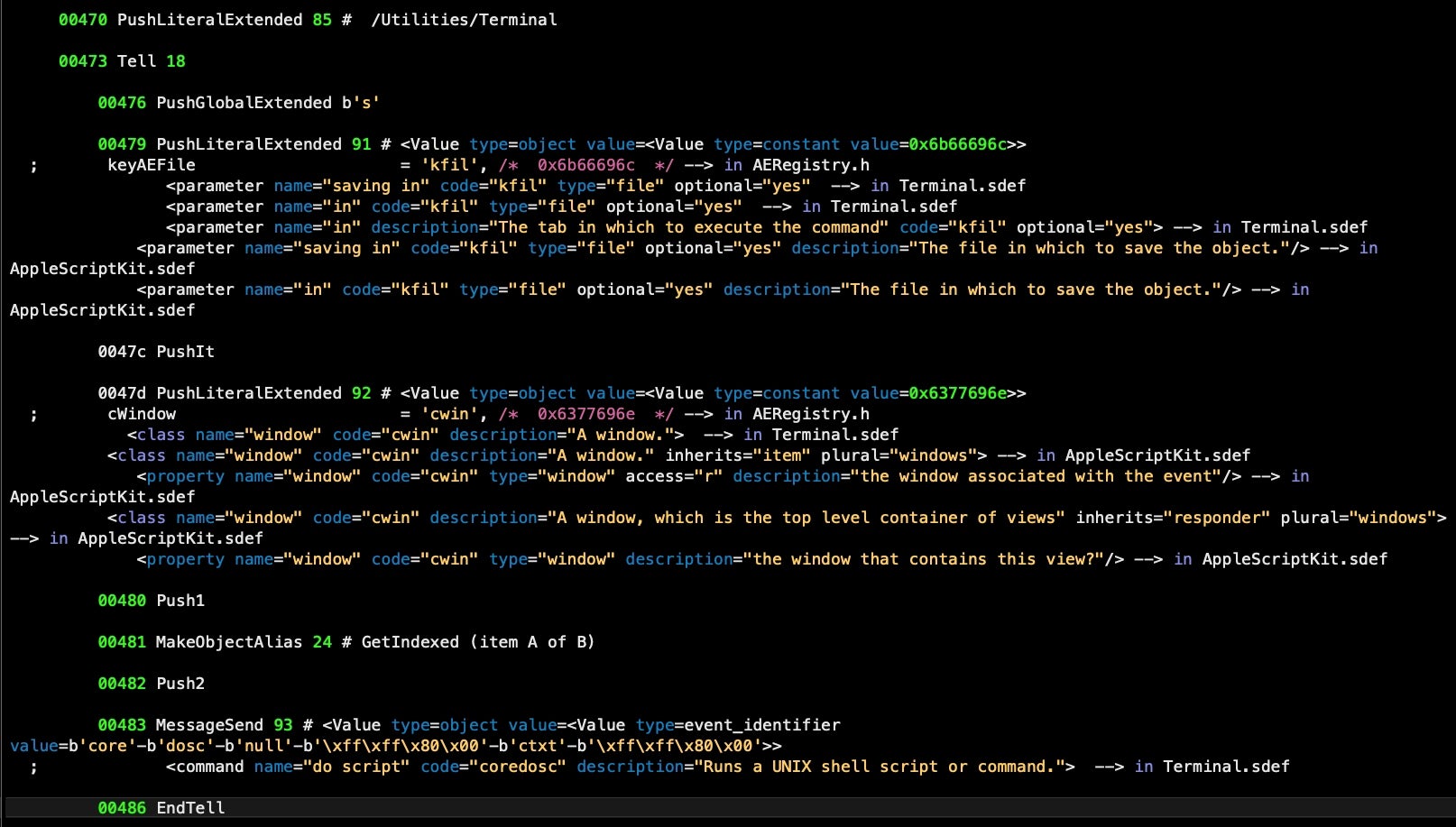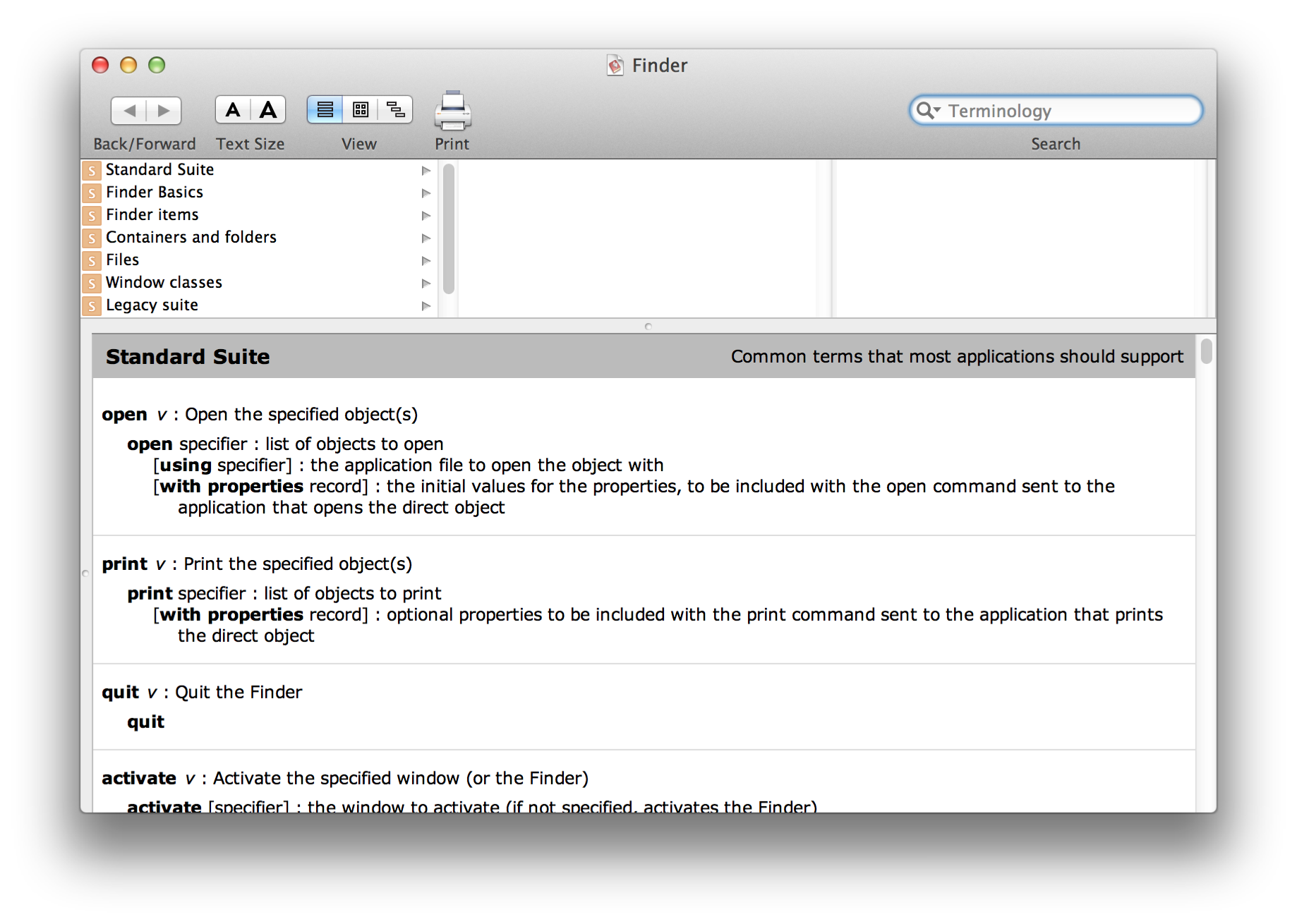Scratch is a free programming language and online community where you can create your own interactive stories, games, and animations. I Learn AppleScript The Comprehensive Guide to Scripting and Automation on Mac OS X, Third Edition Hamish Sanderson and Hanaan Rosenthal.
Monday, 23 December 2002
Three interesting bits of developer tool news from the weekend:
Project Builder Support for BBEdit
The latest version of Project Builder finally supports external editors, most especially the two text editors at opposing ends of the spectrum: BBEdit and emacs. This is delightful news. I’ve only tinkered with it so far, but it seems decent enough.
You probably don’t use developer tools like Project Builder, but if you use a Mac, you’re no more than one degree of separation away from someone who does. Good development tools make programmers happy, and happy programmers write better software.

Script Editor 2.0 Beta
Apple released a beta version of Script Editor 2.0, rewritten for Mac OS X. It is most definitely a major improvement over the old Script Editor, which is so woefully underpowered as to give AppleScript as a whole a bad name. The old Script Editor has been around for at least 10 years, and still doesn’t have a Find command. In a programming editor.
The new Script Editor not only adds a Find dialog, but also sports a revamped user interface, making more information available in script windows. For example, instead of a single “Result” window to display the result of the most recently executed script, the new Script Editor offers a Result tab at the bottom of each script window. Nice.
To top it off, the new Script Editor is itself a scriptable application. The old Script Editor, shamefully, is not. Other modern amenities, such as multiple undo, are supported.

In cursory testing, it seems stable. Its “beta” status might be more an indication of a lack of UI refinement than under-the-hood instability. For example, the Font and Format menus both seem superfluous — there seems to be no need for any of the commands in either of these menus.
It’s no Script Debugger, but that’s OK — Script Debugger is overkill for most users. The new Script Editor is like iMovie; Script Debugger is like Final Cut Pro. The old Script Editor is like trying to make a flip-book-movie using a pencil and wet paper.
GUI Scripting
And then there’s GUI Scripting, which MDJ/MWJ publisher Matt Deatherage described as “this weekend’s ‘holy crap’ link” on the MacJournals-Talk mailing list. From Apple’s description:
Scripters have often requested the ability to control, via AppleScript, applications which either do not have AppleScript support or are only partially scriptable. The new Developer Tools release contains a beta version of the System Events application incorporating support for scripting the GUI (Graphic User Interface) of applications.
Using this version of the System Events application, AppleScript scripts can select menu items, push buttons, enter text into text fields, and generally control the GUI of most non-Classic applications.
Holy crap is right.
If you don’t use AppleScript, this might not sound like a surprising feature. But the sort of “macro” scripting described above runs contrary to everything AppleScript has been capable of in the past. AppleScript is not a macro language that acts like an automated user, driving the visual interface of an application. Instead, Apple is a language designed for sending Apple events, to drive an internal interface to scriptable applications. (GUI Scripting does not bode well for QuicKeys, I think.)
What that means is that prior to GUI Scripting, AppleScript was only useful for automating scriptable applications. Far too many Mac applications aren’t scriptable, and even among those that are, many offer scripting dictionaries that are some combination of inadequate, superficial, and crummy.
And so some would often complain that AppleScript is inadequate, because it does not allow for scripting unscriptable applications. Others would complain that more applications should be scriptable. Such as, for example, many of Apple’s own applications, many of which aren’t scriptable in any serious sense of the word.
Applescript Editor 2.0 Crack
And indeed, many of the example scripts on Apple’s GUI Scripting web page are poking about Mac OS X applications from Apple, applications like System Preferences which should be truly scriptable, but aren’t.
For example, look at this snippet from a GUI Scripting example that changes the mouse (or trackpad) settings:
That sucks. It means your script is utterly dependent on the exact layout of the visual interface. Instead of referring to named objects and classes, you must refer to GUI controls by position. If the layout of the Mouse prefs panel changes in the future, this script will break. Or worse, the script will misbehave in seemingly random ways; if the sliders for tracking speed and double-click speed swap positions in a future version of the Mouse panel, the above script will still run, but it will change the wrong settings.
Yes, it’s just an example script. But if Apple’s going to acknowledge that you might want to change the settings for your mouse via AppleScript, they ought to allow you to do it the right way.
This is not to say the GUI Scripting concept doesn’t have its appeal. For one thing, I can imagine that it will be very useful for simulating user actions when QA-testing applications. And there’s no denying the reality that there exist many applications which do not properly support OSA scripting, yet which would be handy to automate. What I fear, however, is that GUI Scripting will provide cover to lazy and ignorant developers who do not wish to provide genuine scripting interfaces to their applications. We don’t need to provide a decent scripting dictionary, just use GUI Scripting.
I’d feel a lot worse about this, however, if it weren’t for the Script Editor 2.0 beta, which shows that at least some developers at Apple are still interested in creating good scripting interfaces.
What is itSoftware for modifying various game files. If you want to increase ship speed, change in-game text, decompress the game files (catalogs) - it can do it for you.
Applescript Editor
See list of supported files on on X-Wiki to see what can be opened with X3E2. Download
DownloadLast full installation 2.0.23.0 from 10.1.2012 (dd/mm/yyyy)
Applescript Editor 2.0 Download
Note that only latest full installation is listed here. There are usually newer updates available via Internet update.
 Get it from x3e2.doubleshadow.wz.cz
Get it from x3e2.doubleshadow.wz.czor The X Universe mirror
X3E2 requires .NET 3.5. The installer will check for .NET 2.0 but it's not possible to check for 3.5.
As usual, there is a help file which describes the user interface but not the structure of the files you will be editing.
Vista with UAC
X3E2 works under Vista 32/64 with or without User Account Priviledge Control. However there is a glitch. X3E2 needs to be able to write to its own instalation directory (how awful!) which is not possible if you have User prviledges and you are trying to write to Program Files directory.
So under Vista, the default installation directory is c:X3 Editor 2. You may change it, but make sure you are able to write to it. You will receive error during X3E2 shutdown if it cannot write its settings, and you won't be able to perform automatic updates.
Developers
X3E2 is written in C# using .NET 3.5. You can use Visual Studio Express 2008 or the full paid version.
There is no documentation yet, but take a look at the TDebugger plugin as an example.
Look at Plugin.cs - that's the interface you must implement. That and a single User Control. Not that hard, is it?